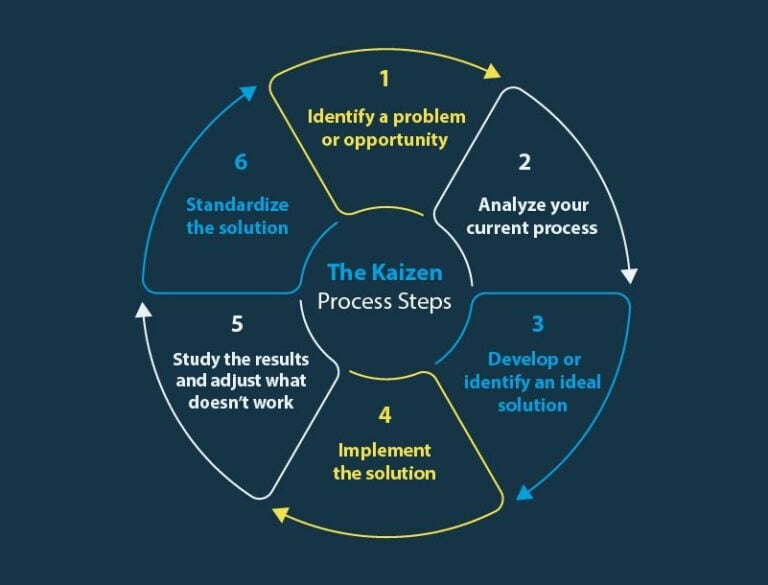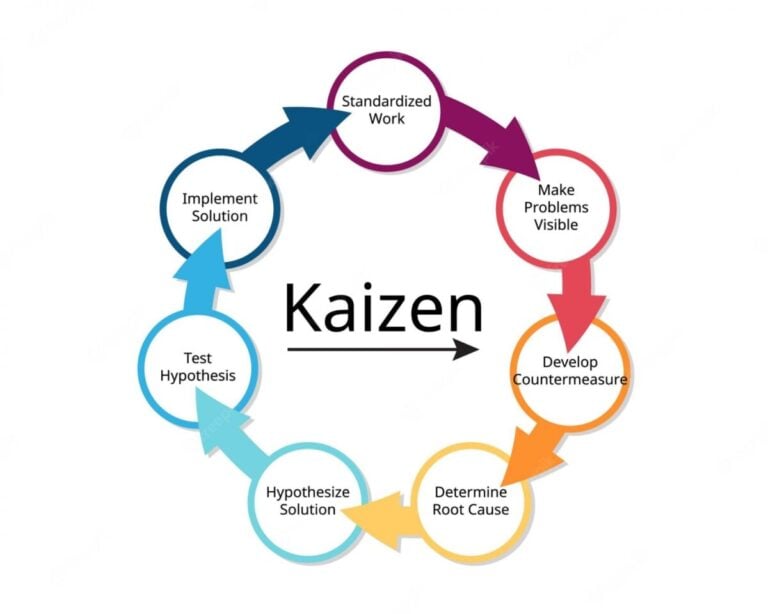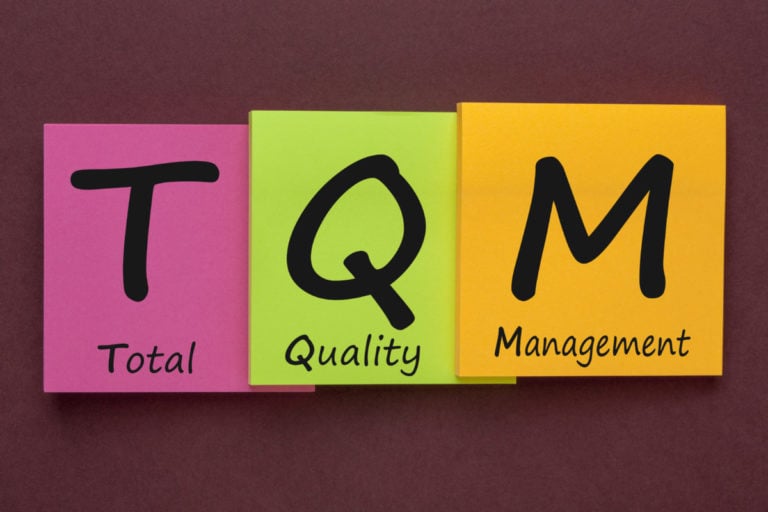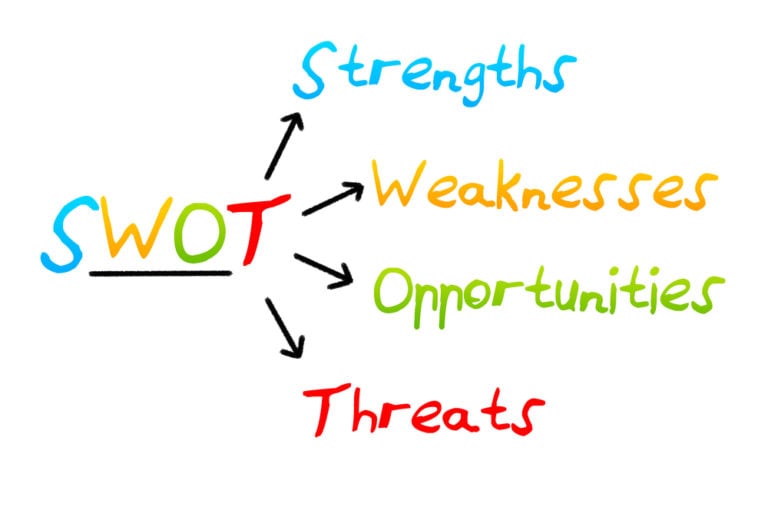Kaizen, a Japanese management philosophy based on continuous improvement, has gained worldwide recognition for its ability to transform business and develop a culture of innovation and efficiency.
By applying the principles of Kaizen, organizations can streamline processes, increase productivity, and foster mindset development among employees. This article covers the basics of the Kaizen management system and provides practical guidance on how to implement it in your business.
Kaizen Philosophy
It encourages businesses and individuals to identify and address inefficiencies, waste, and other barriers to productivity. Unlike other management approaches that focus on radical change, Kaizen emphasizes incremental improvements that can lead to significant benefits over time.
Five Key Principles of Kaizen
Identify opportunities for improvement. The first step in implementing Kaizen is to identify areas where improvements can be made. This includes regularly reviewing processes, workspaces, and systems looking for inefficient or underperforming areas.

Teamwork and Collaboration. Kaizen relies heavily on collaboration and teamwork. By engaging employees at all levels, organizations can access a wealth of knowledge and experience, helping to create a sense of ownership and responsibility among team members.
Continuous improvement. Kaizen is not a one-time project, but a continuous improvement cycle. Organizations must constantly evaluate their performance, identify areas for improvement and implement change, creating a culture of continuous growth and development.
Standardize best practices. As improvements are made, organizations should document and standardize best practices. This ensures that successful changes are consistently applied throughout the organization, enhancing the benefits of the kaizen approach.
Think and adjust. Regular reflection and analysis is essential to the Kaizen process. By evaluating the results of the improvements implemented, organizations can identify areas for further improvement and make adjustments as needed.
Introducing Kaizen into your business
Creating a Kaizen culture. To successfully implement kaizen, it is essential to create a culture that involves continuous improvement. This includes encouraging open communication, encouraging feedback, and allowing employees to take responsibility for their work.

Teaching employees the principles of Kaizen. Providing training and resources on the principles and methods of Kaizen can help employees better understand the philosophy and how it applies to their daily work. These can be master classes, seminars or online courses.
Set clear goals and objectives. Setting clear, measurable goals and objectives is critical to the success of any Kaizen initiative. Make sure your team understands the desired results and is committed to achieving them.
Give employees the opportunity to make improvements. Encourage employees to be proactive in identifying and implementing improvements within their areas of responsibility. This may include providing tools and resources, or establishing a formal process for submitting proposals and ideas.
Check your progress regularly. Schedule regular evaluations of your organization’s progress towards achieving Kaizen goals. This includes reviewing performance metrics, reviewing employee feedback, and evaluating the effectiveness of implemented changes.
Celebrate success. Recognize and reward employees for their contributions to the Kaizen process. This can help reinforce a culture of continuous improvement and motivate employees to continue looking for growth opportunities.
Conclusions
Kaizen, a Japanese continuous improvement management system, offers organizations a powerful foundation to improve efficiency, productivity and innovation.
By adhering to the core principles of kaizen and maintaining a culture of continuous growth, businesses can reach their full potential and maintain a competitive edge in an ever-changing marketplace. By following the practical steps in this article, you can begin your journey to implement Kaizen in your organization and reap the benefits of this transformative management.













